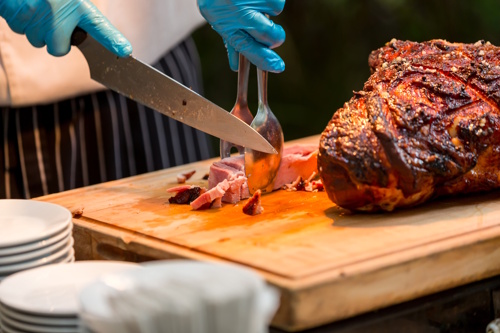Dining has long been a highlight of travel. Yet across the world, traditional restaurants are struggling to keep their appeal. Prices are rising, menus are becoming repetitive, and staff shortages leave many venues stretched thin. In some destinations, guests even bring their own groceries to islands or cook in holiday rentals rather than spending money on restaurants. What used to be a pleasure is turning into a burden.
At the same time, the appetite for unique and meaningful experiences has never been greater. Travelers are no longer satisfied with simply being served; they want to explore, learn, and connect. The answer lies in culinary journeys – experiences where food becomes part of a larger narrative that blends nature, culture, wellbeing, and community.
The struggle of traditional dining
For decades, the formula was simple: offer good food, decent service, and a comfortable setting. Today, that formula is not enough. A three-course dinner, however well prepared, rarely creates lasting memories in a world saturated with options. Dining is not disappearing, but it is being redefined. Guests increasingly expect their meals to tell stories, reveal culture, or connect them to people and places.
Restaurants that rely only on the plate risk being left behind. Hospitality businesses that expand the context of dining, however, find themselves at the forefront of a new movement.
Food as part of the journey
Some of the most innovative examples come from Asia. In Japan, Walk Japan’s onsen gastronomy tours combine gentle countryside walks with hot-spring bathing, regional food, and encounters with local artisans. The dishes themselves are memorable, but what makes the experience powerful is the way they are woven into landscapes, traditions, and community life.
Europe has developed its own approaches. Food trails through historic towns invite guests to discover local specialties step by step, often guided by storytellers in costume or accompanied by cultural performances. In the Alps, multi-day hikes link mountain huts, each offering a different regional dish, so that the act of eating becomes a journey through geography as well as taste.
North America has embraced similar concepts. In Canada, indigenous food trails bring travelers into direct contact with heritage and land. A piece of bannock bread or smoked salmon becomes extraordinary when prepared over an open fire, accompanied by stories of history and resilience. In the United States, vineyards and breweries now go beyond tastings to include harvest walks, blending workshops, and opportunities for guests to create their own products.
Wellbeing and gastronomy
Food is also merging with wellbeing. Culinary retreats combine yoga, meditation, or spa treatments with local cuisine, creating experiences that nurture body and mind together. In Scandinavia, winter terraces invite guests to embrace the cold, wrapped in blankets while sipping hot drinks and eating seasonal dishes. Here, the environment itself becomes part of the menu, turning climate into an ally rather than an obstacle.
This integration of wellbeing is more than a lifestyle trend. It is also sustainable. Smaller settings, seasonal produce, and immersive rituals consume fewer resources than oversized dining rooms or imported luxuries. For health-conscious travelers, such experiences feel both responsible and rewarding.
Technology as an enabler of culinary journeys
The rise of technology is adding new layers to this evolution. Digital platforms make it possible to plan and personalize culinary tours. Guests can collect digital “stamps” at each stop of a food trail, track their favorite places on an interactive map, or book workshops directly through apps. Gamification keeps the journey engaging while building loyalty.
Artificial intelligence and big data push personalization even further. Imagine an AI tool that suggests experiences not only based on dietary needs, but also on mood, weather, and past reviews. Guests could receive hyper-personalized itineraries where each dish, activity, and encounter feels designed just for them.
Even virtual and augmented reality are beginning to play a role. A VR headset could transport a diner to the farm where their vegetables were grown, while AR could overlay stories of heritage onto a dish as it is served. These technologies do not replace authenticity – they enhance it, turning meals into interactive storytelling platforms.
The human side of culinary experiences
Yet technology alone is not enough. At the heart of these journeys lies the human connection. Authenticity means more than using local ingredients – it means sharing the stories of the people behind them. Meeting a farmer, watching a fisherman at work, or learning from a craftsperson adds depth that no menu can capture.
Culinary journeys also create community among travelers themselves. A progressive dinner through a city, where each stop is a new course, turns strangers into companions. A hands-on cooking class fosters collaboration, laughter, and lasting friendships. These interactions often become as memorable as the food itself.
Workshops and courses deepen this effect. Guests do not just consume; they learn and create. Baking bread in a rustic oven, blending spices into a personal mix, or making cheese under the guidance of an artisan gives participants something tangible to take home – a story in the form of skill.
Why guests seek more than food
Behind the demand for experiences lies a psychological truth. In a world where consumption is easy and goods are abundant, people crave meaning. A culinary journey that connects them to nature, tradition, or culture fulfills this desire.
Mindfulness is part of it. When a traveler knows where a dish comes from – perhaps having harvested the ingredients themselves – they eat more consciously and with greater appreciation. Discovery is another driver. The thrill of finding a hidden farm, a family-run winery, or a market stall unknown to the guidebooks makes guests feel like explorers. This sense of discovery is priceless and deeply satisfying.
Ultimately, the search for meaning, mindfulness, and discovery explains why travelers are turning away from conventional dining and toward experiences that engage all senses.
Business opportunities behind culinary journeys
For hospitality providers, this shift is not just cultural – it is commercial. Culinary journeys open new revenue streams and strengthen guest loyalty.
Seasonal products are one pathway. Farms and restaurants can design experiences around harvests – asparagus walks in spring, mushroom foraging tours in autumn, or winter feasts with regional specialties. These events drive demand while keeping costs in line with seasonal supply.
Partnerships are another key. Hotels, restaurants, local producers, guides, and transport providers can collaborate to create packages that no single operator could offer alone. A hotel might provide accommodation, a farmer the produce, and a local guide the storytelling. Together, they create a journey richer than any could deliver independently.
Even pricing models can evolve. Culinary subscriptions, where guests pay for a series of food trails or workshops, create recurring revenue. All-inclusive packages that combine meals with experiences – vineyard tours, cooking classes, market visits – provide clarity for guests and stability for hosts.
These business models not only secure profitability but also elevate the reputation of properties as innovators. In a competitive market, differentiation matters as much as cost control.
Looking ahead
The future of hospitality dining will be defined less by menus and more by memories. Guests will increasingly seek experiences where food anchors them to landscapes, cultures, and communities. Standard dining may be losing its shine, but this is not the end of gastronomy. It is its reinvention.
From Japanese onsen tours to Canadian food trails, from European heritage walks to American vineyard workshops, the global trend is clear: food becomes part of a larger journey. Technology enables it, human connection enriches it, psychology explains it, and business models support it.
Because in the end, food is never just food. It is story, community, wellbeing, and discovery — and in combining these, hospitality finds its most powerful recipe for the future.




